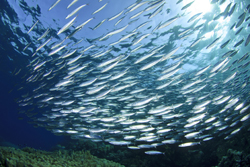Genetic lab-on-a-chip for managing fish populations
Fish have traditionally been managed and monitored only on the basis of their location. But scientists have realised that conservation efforts would be more effective if biological indicators are used as well. A project titled 'Fish population structure and traceability' (FISHPOPTRACE) was funded by the EU to improve and standardise population monitoring tools for commercial fish species. Cod, hake, herring and sole were chosen as key species, and the project aimed to develop end-user tools such as standard genetic markers for population management. Modern genetic assays were used to identify markers that could distinguish between different populations of the same species. This was complemented by the identification of physical markers that support the genetic data. Validation of these tests showed that the genetic markers are the most reliable in the long term, and could be used for forensic analyses. Testing of this system was performed by incorporating genetic markers into a portable and rapid 'lab-on-a-chip' system. Project members also established a comprehensive database, which incorporates tissues and genetic information from several previous studies. In addition, an online platform was created to make this database publicly available to interested parties. FISHPOPTRACE has provided tools to distinguish between various fish populations and these tools are already contributing to population management. This will ultimately result in sustainable, efficient and economically viable fishing practices.







